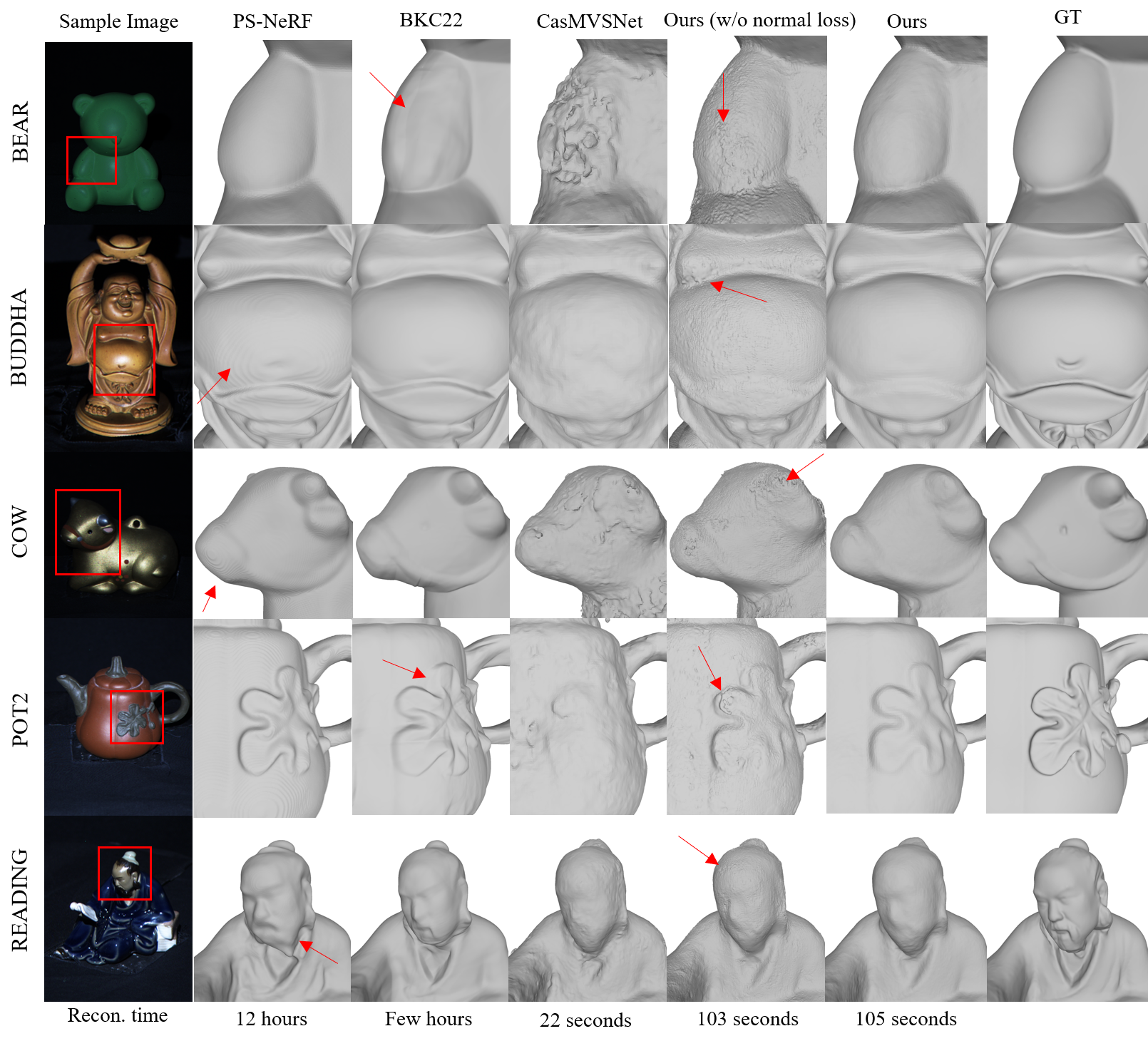Results
Results on DiLiGenT-MV
MVPSNet achieves comparable results to SOTA method while being fast and generalizable.


Result on real-world capture
Result of an example of real-world capture using a simple at-home setup: a user captures MVPS imagery by attaching a flash-light with a string to the tripod to move lights in a circle around the camera.